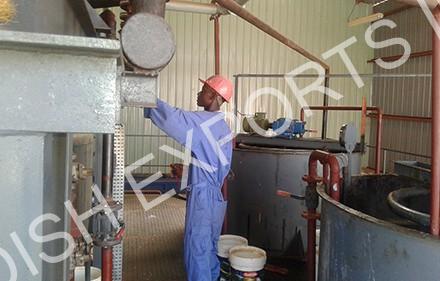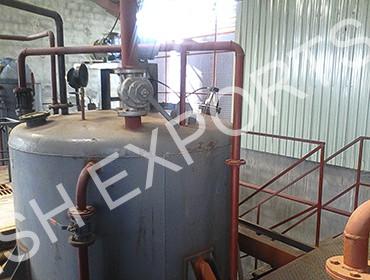

Neutralizing
This is the first process of refinery. It is also called the alkali neutralizing process. In every cooking oil there will be some proportion of free fatty acids – FFA that increase the rancidity in the oil and it is harmful to the health.
The FFA percentage is found different in different oils at different stage. In some fresh oils of fresh oilseeds like groundnut oil, sesame oil, sunflower oil the FFA percentage will found very less.
Hence it can be also used directly without refined for eating purpose. While cottonseed oil, palm oil, soybean oil, corn oil, coconut oil is having a high ffa hence it is advisable to use these oils after refining.
But in some countries these oils are also used without refining as per people’s choice. The refined oil can be stored for long time. Any crude oil will be heated in the neutralizer with continues and required type of stirring at required temperature by adding the required quantity of caustic soda (sodium hydroxide – NAOH).
During the process, FFA will be separated in form of soap stock, which can be used in the preparation of laundry soap. To remove the alkali particles, the water wash to the neutralized oil is given. This operation is done in the same vessel of neutralizer.
Degumming
Sometimes some particles or impurities are found in dissolved form in the oil and which increase the turbidity of oils. Such impurities cannot be separated by neutralization or filtration. Degumming is the treatment of crude oils with water, salt solution or dilutes acids such as phosphoric, citric or maleic to remove phosphates, waxes and other impurities.
This process require in very rare cases. Most of the cooking oils in U.S.A. also are refined without degumming. Even though this operation is also done in the same vessel of neutralizer.


Deodorizing
In the bleaching process, we removed the colour. Now we came to the final process of deodorizing. Its main purpose is the removal of those substances which are responsible for off flavours and odours. Most of the taste of deodorized or finally refined oil will be automatically destroyed with the removal of odours. This process is divided in to four stages.
- Heating – De aeration
- Deodorization – Steam stripping
- Heat recovery
- Cooling
- Filtration
The operation will start with de aeration in the vessel of deodorizer. Bleached oil will come from the bleached oil tank in to the vessel of deodorizer. The first heat is generated by an incoming / outgoing oil/ steam exchange.The temperature will have been increased as per requirement under the required pressure or high pressure of vacuum. The temperature is depending upon on the type of oil.
The real deodorization is take place under the high temperature with steam agitation. The steam is injected through steam ring / coils in the oil. This ensures the turbulent agitation and also increases the temperature.
Due to this there will be an even steam distribution on the surface of oil in the vessel. This operation will continue for required time. But it depends upon on the condition of oil.
Then the oil will be transferred in to the cooling vessel under the vacuum. To remove some separated trace elements, cooled oil will be passed through filter press from where finally refined oil is obtained.
